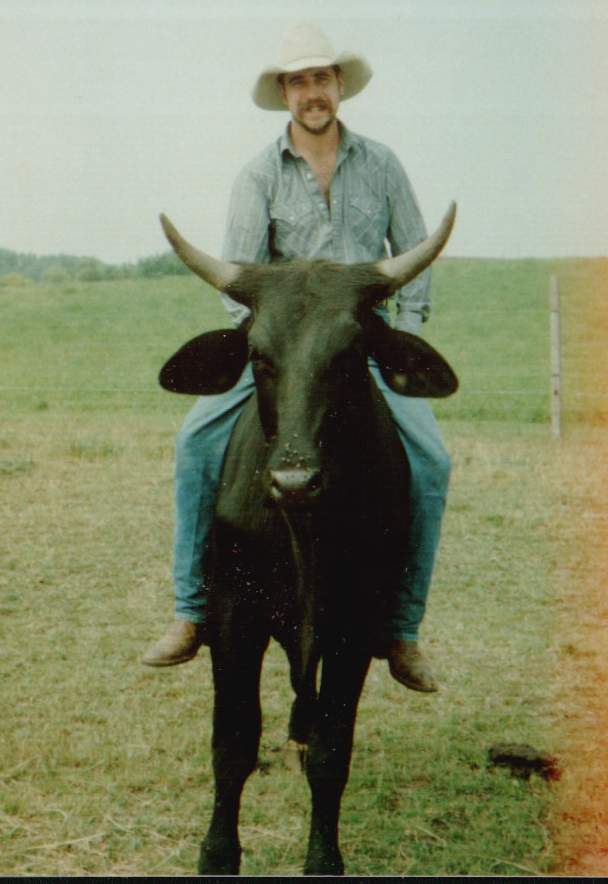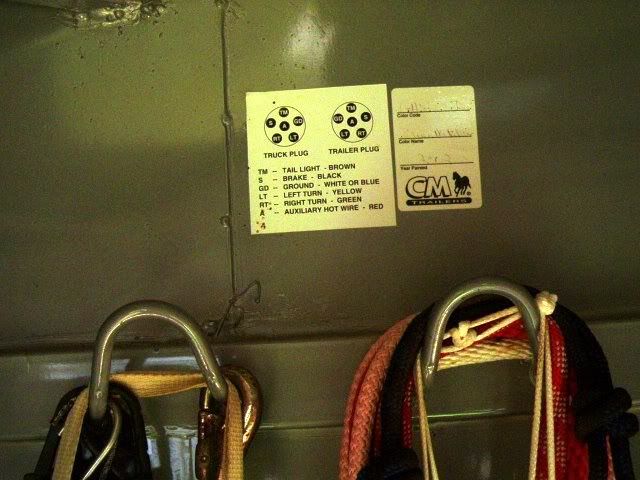|
|
New User
Posts: 4
| I just picked a 2003 CM Norstar today and when we plugged in the lights the trailer brakes would lock up. We finally got the brakes to work right but no brake lights etc. I am pretty sure that the problem is in my truck plug wiring but I am not real sure where to start. The truck as a 2002 F-250. Thanks in advance. |
|
| |
|
New User
Posts: 4
| anybody?? |
|
| |
|
Expert
Posts: 3853
       
Location: Vermont | Originally written by sfench on 2007-12-01 6:00 PM
I just picked a 2003 CM Norstar today and when we plugged in the lights the trailer brakes would lock up. We finally got the brakes to work right but no brake lights etc. I am pretty sure that the problem is in my truck plug wiring but I am not real sure where to start. The truck as a 2002 F-250. Thanks in advance. You need a diagram of what your truck pinning is and trailer pinning is supposed to be... The most common tool for troubleshooting electrical problems is a voltmeter, a device use to indicate the presence of a voltage. Personally, I think this is a big mistake when chasing difficult electrical problems. The impedance of these devices is so high, you
can't load down a faulty connection with them. In other words, you can read 12 volts (really 13.2 volts) on the meter, but you can't pull enough current through a faulty connection to light a bulb. I prefer to use a bulb with two test leads (wires) attached to it. If the bulb comes on when I connect it, I have voltage and current, and current is
what makes a bulb glow.
Besides the test bulb or a device to check voltage, the only other special tools are things needed to make reliable electrical connections. These include a crimping tool, wire stripper, wire cutters, fine sandpaper (emery cloth) and dielectric grease. The
thing to remember about electrical connects is they must be clean, mechanical sound and protected. A clean connection means the wires are shiny and free of contaminants before you connect them. A mechanically sound connection is one that is made by crimping or by forcing the conductors (metals) together. Once you make a good
connection, protect it. Use dielectric (non-conducting) grease to seal crimps or connections. If you can't find something called dielectric grease, get an automotive silicon grease (clear).
|
|
| |
|
 Veteran
Posts: 246
  
Location: Northern IN. | I assume that your rig has a tow package installed from the factory and that you are talkin' about the R.V. (7-way round) plug under the rear bumper. Are you using an adapter of any sort? Has the wireing going into the trucks plug ever been "monkied" with that you know of or is it still like it was from the factory? Same question for the trailer pig-tail and plug? What did you do to get the trailer brakes to work right? We need details!!! |
|
| |
|
New User
Posts: 4
| Yes it does have a 7 roung under the bumper, and to the best of my knowledge until today it have never been fooled with. To make the the brakes work we but the red wire to the center post on the truck plug. The trailer is still the original plug also. The adapter was bought from a local auto parts store and not the one that I have been using. I really feel like it may be in the adapter, because I used our othe trailer a 3 horse sundowner on thursday to a horse to the vet and things worked fine. I plan to get the adapter off of the other trailer tommorow and put my truck plug back the way it was and go from there. Any other suggestions would be greatly appreciated. |
|
| |
|
Expert
Posts: 5870
      
Location: western PA | Buy a new male plug for the trailer that matches your truck's female end. On my ford and many others is a plastic tag wrapped around the wiring harness by the plug. If this isn't present, your will have a wiring diagram in your owner's manual. Your trailer's manual will also have a wiring diagram, some manufs have a web site with that info, or contact the manuf directly for the trailer wiring pin allocation. Throw your adapter away and wire your new male trailer plug comparing the two wiring diagrams. It will take about 10 minutes and save a lot of headache later. BOL Gard |
|
| |
|
 Veteran
Posts: 246
  
Location: Northern IN. | If you're using an adapter that explains alot! There are (to the best of my knowledge) 3 kinds of adapters out there. The difference all has to do with which prong the electric brakes and the 12V positive wires are hooked to. These two wires can be switched around on a lot of trailers. Once you take a test light and a few minutes to figure out which way you need your adapter to be set up you can go to the store and read the pakage, it should tell ya which of the two ways that particular adapter is wired, the third (which is the style I have) is one that can be taken apart with four screws and the two wires switched around on the inside of the adapter to fit your needs. I'll bet that the adapter that ya bought yesterday, or today, whatever, is just set up wrong. Your old adapter will probably fix the problem. Talk to y'all later... |
|
| |
|
Expert
Posts: 2960
       
Location: North Carolina | Originally written by gard on 2007-12-01 9:07 PM Throw your adapter away and wire your new male trailer plug comparing the two wiring diagrams. It will take about 10 minutes and save a lot of headache later. I agree... Adapters are an easy way to double the potential "BAD" connections to the trailer. Choose a single standard wiring pattern and stay with it. |
|
| |
|
Member
Posts: 10
Location: Sunny Florida | We have used a Walmart 7 adapter and had the brakes lock..switched to a Redneck or other brand and it didn't. Problem totally in the adapter. |
|
| |
|
Member
Posts: 20
| I'm with everybody else and think its the adapter. If you have any more trouble check around your trailer I'll bet you find one of these. On my GMC the wiring color code for the female plug on the truck is on the protective cover flap. Get a test light and you'll be on the road in no time. 
|
|
| |
|
 Veteran
Posts: 246
  
Location: Northern IN. | I too, agree with the folks that say to wire your trailer to match your rig, and get rid of the adapter, IF this is going to be your regular trailer and T.V. (tow vehicle). In a case like ours, my wife likes to use the 7 way R.V. plug on her T.V. and trailer, I on the other hand love my 6 way round or as they are often called "horse trailer plug". Soooo, when either of us, for whatever reason, use the other ones wagon we have to use an adapter, which is realy no big deal for ocassional use, once you have all the "bugs" (like you're having now) worked out. But like I say, if this IS gonna be your normal rig, I would rewire that trailer plug to match the T.V. with no adapters, Hope we've helped, and there should be some links or schematics to standard wireing codes somewhere on the homepage of this site I think, been a long time since I've looked at them, I'll bet somebody else knows right where they're at though. Talk to y'all later... |
|
| |
|
.jpg) Expert
Posts: 2828
     
Location: Southern New Mexico | http://www.horsetrailerworld.com/home/wiring.asp This is the one I used when I re-did my truck/trailer. |
|
| |
|
New User
Posts: 4
| We changed the adapter to the one I have for our other trailer and things worked great, but I am going to change the plug so I can do away with the adapter. Thanks for all the info and suggestions. |
|
| |
|
 Veteran
Posts: 246
  
Location: Northern IN. | glad to hear all is well, it will be better when ya get the plug switched over. Talk to y'all later... |
|
| |
 trailer lights
trailer lights trailer lights
trailer lights